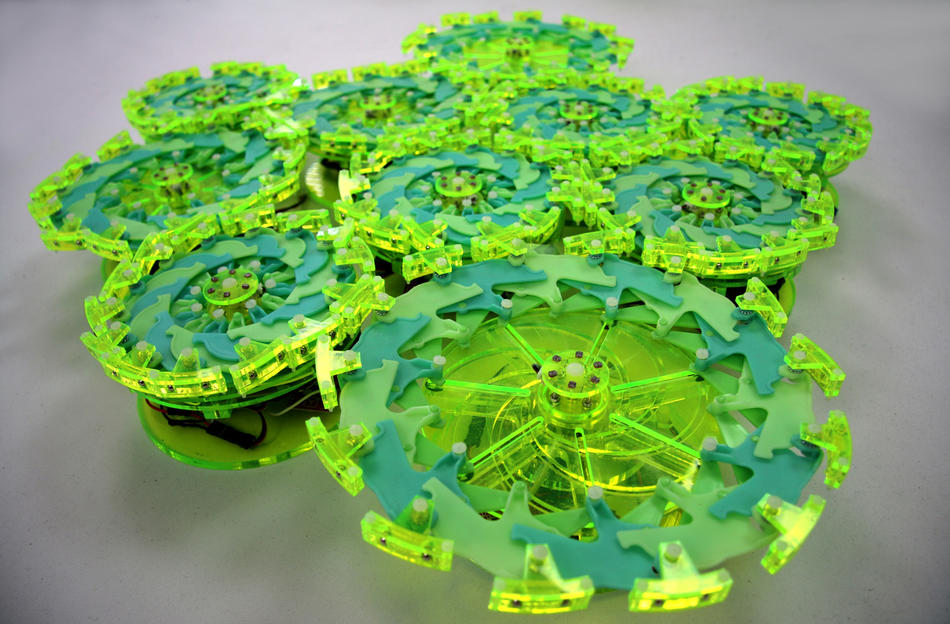Biology is rich with examples of how complex phenomena can arise from simple interactions: consider how billions of neurons work together to form and store memories, or how white-blood cells organize themselves into hit squads to combat disease.
Inspired by such examples of “emergence” in nature, a group of Columbia and MIT engineers has developed a robotic propulsion system that is much more than the sum of its parts. It consists of an assemblage of six-inch-wide plastic discs that expand and contract like blooming flowers in response to light. (Each disc contains a small battery-powered motor and sensors.) When the discs are loosely attached to one another with magnets, their gentle undulations have a surprising cumulative effect: the whole cluster vibrates and, as a result of tiny variations in the timing of the discs’ movements, propels itself toward the nearest light source.
Hod Lipson, a Columbia professor of engineering who led the research team alongside MIT’s Daniela Rus and experimental toy designer and architect Chuck Hoberman ’85SEAS, says that the system is both flexible — it can navigate around obstacles and squeeze through tight gaps — and resilient. In a series of experiments reported in the journal Nature, the researchers showed that a prototype keeps working even when some of its discs fail or become detached.
“Most robots are composed of lots of intricate and fragile parts whose malfunction will cause the whole apparatus to break down,” he says. “The beauty of our design is that its components are all simple, sturdy, and expendable.”
Lipson says that the system could be used to create new kinds of robots capable of venturing into hazardous environments.
“It could easily be adapted to gravitate toward chemicals rather than light, in which case it would be perfect for cleaning up toxic spills or even exploring distant planets,” he says.



